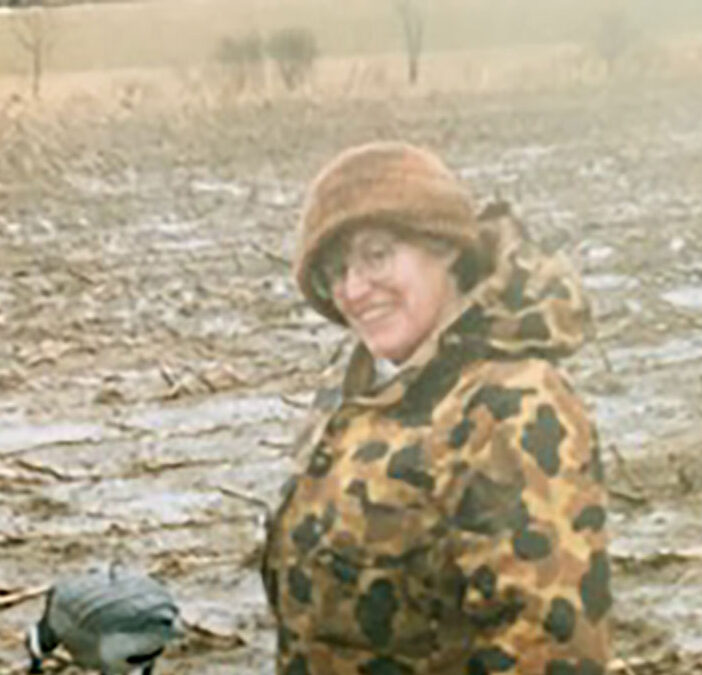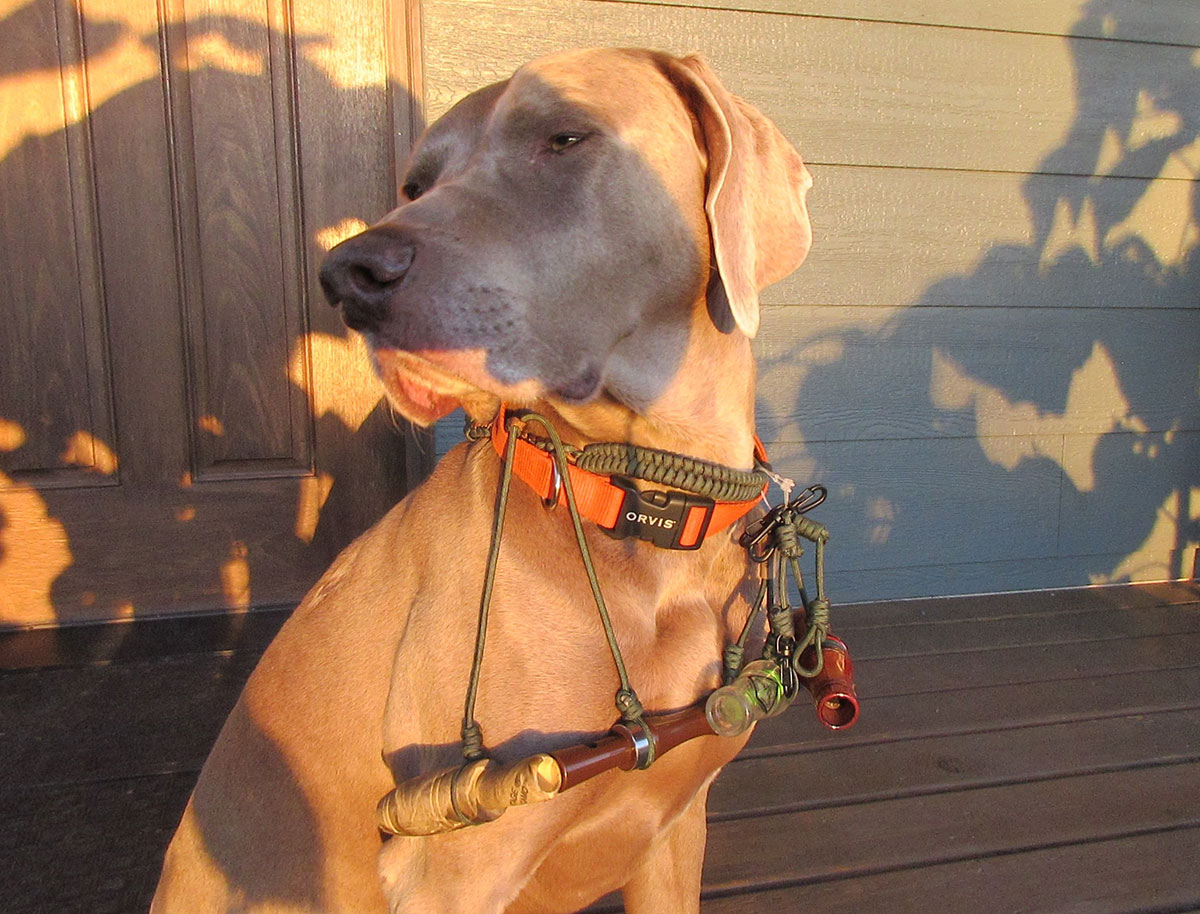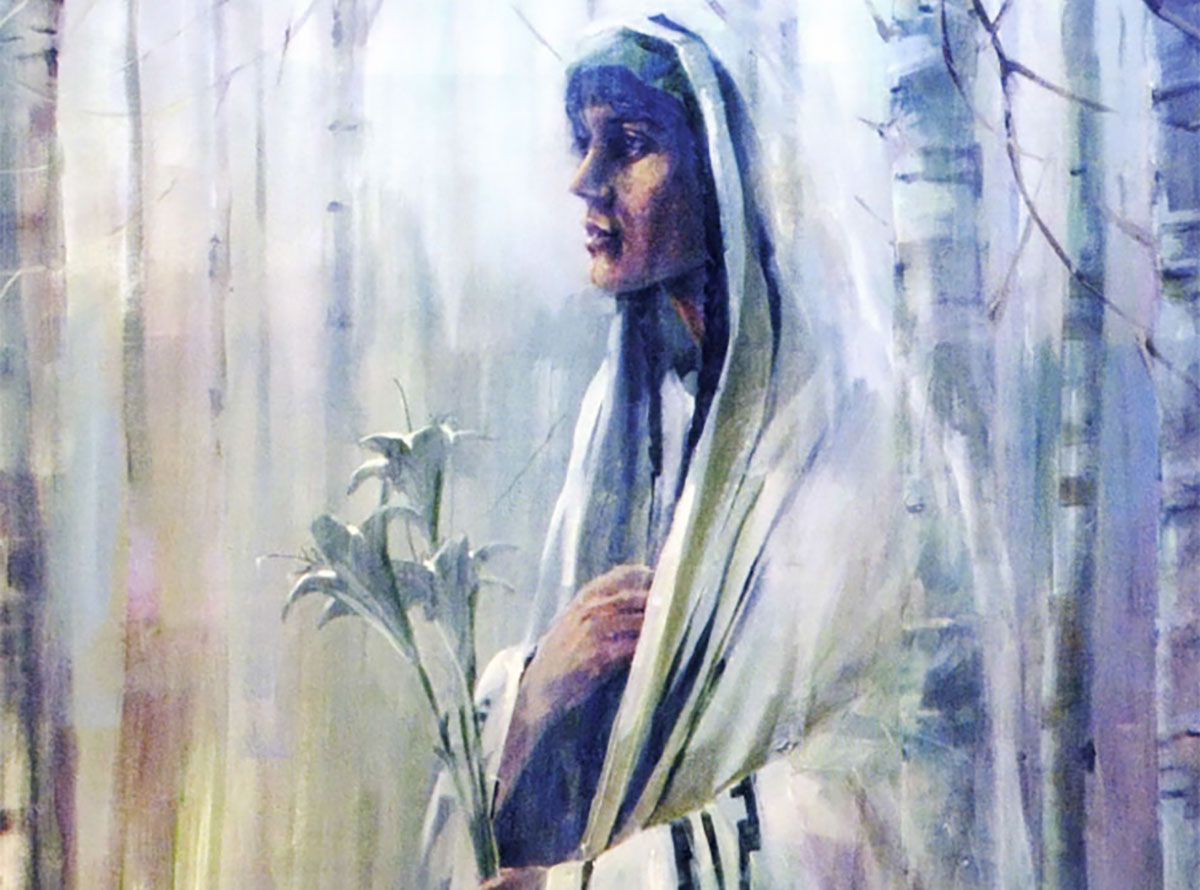It was December, and the goose season in New York’s Duchess County had three more weeks to run. This is a winter goose hunt from long ago, where an unexpected hunting partner joined me — after all other companions fell through. In this Yuletide season, we remember that it is our family who make for warm memories on cold days.
My rig of more than 200 decoys are stacked in layers in the back of my 1950 Willys Overland pick up. I’ve spent the morning following geese from Lake Wononskopomuc in Lakeville, Connecticut, to a field on Winchell Mountain between Millerton and Pine Plains, New York. In the past weeks, my hunting partners and I have taken birds flying into other farm fields belonging to the Lees, Muellers, Stausses and McEnroes. Now they’ve moved farther west, to Winchell Mountain, where on a good day the Catskill Mountains are grandly visible. And these birds are “piling in” on Jack Pulver’s farm.
I drive to the barn to check in for a hunt the next morning. I greet Jack, a friend of long standing. “Okay to try for the geese tomorrow morning?”
“Sure, no problem, Bob. You’re always welcome here.” Music to my ears.
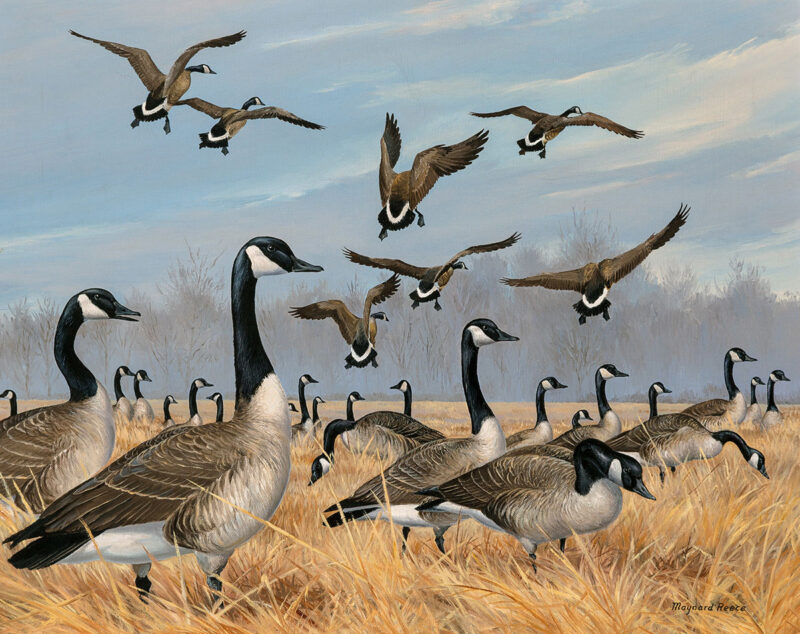 At home, I call my hunting partners. “Hey, it’s Bob. Geese are pilin’ in on Winchell Mountain. Tomorrow morning?” Jim’s daughter is visiting. Don has a cold. Curtis is leaving later to visit his brother. Well, it wouldn’t be the first time I’ve hunted geese alone. Of course, the set up takes longer, but the weather will be perfect — cold and rainy with perhaps a bit of sleet. On top of that, two days ago a thaw melted the snow off and left behind corn. Ideal conditions, easy decision. I’m going alone.
At home, I call my hunting partners. “Hey, it’s Bob. Geese are pilin’ in on Winchell Mountain. Tomorrow morning?” Jim’s daughter is visiting. Don has a cold. Curtis is leaving later to visit his brother. Well, it wouldn’t be the first time I’ve hunted geese alone. Of course, the set up takes longer, but the weather will be perfect — cold and rainy with perhaps a bit of sleet. On top of that, two days ago a thaw melted the snow off and left behind corn. Ideal conditions, easy decision. I’m going alone.
Joanne has made chicken soup. I tell her my plan for the morning. She leans her head back slightly, cocks it a bit to the side and smiles. I know the look. She has an idea.
“Bob, you know how we’ve talked about me going with you on a goose hunt?”
I do know. I’ve thought for a while the experience of goose hunting is so much better in the doing it than in the telling of it, but you should know that while no one enjoys the outdoors more than Joanne – after all, she and I hiked through much of the Ancient Roman Empire – I know that her idea of outdoors isn’t likely to include the appreciation of a muddy cut corn field in wind driven sleet. Still.
She sees I’m receptive. “How about tomorrow?” she says. “I won’t mind Jim, Don, and Curtis not being there. Then I won’t have to worry about not knowing what I’m doing.” Understand, Joanne is not suddenly deciding she wants to take up hunting, this is more her wanting to see goose hunting up-close and personal. We have no concerns about either gun or license, she is not shooting. But she does have a concern. Or should I say, she’s subject to The Concern. The age-old problem for a woman: what to wear?
The only people I know who have camo they won’t be using are Don, Jim and Curtis. Don is six feet and closer to 300 pounds than not. Of the other two, Curtis is the shorter. “Curtis, it’s Bob. Listen, Joanne wants to go out with me tomorrow morning. Will you lend her your camo overalls?” Curtis laughs. “Sure. Can you pick them up in a half hour? I’m leaving soon.”
Forty-five minutes later I’m back with Curtis’ overalls, plus a camouflage watch-cap and waterproof gloves. Happily, Joanne has her own heavy socks and pac boots. She’s anxious to try on the gear. With the sleeves and legs of the overalls rolled up several times, everything fits well enough. “A successful dry run. But you know,” I add, “if the weatherman is right, tomorrow will be a wet run.” She just smiled. So did I.
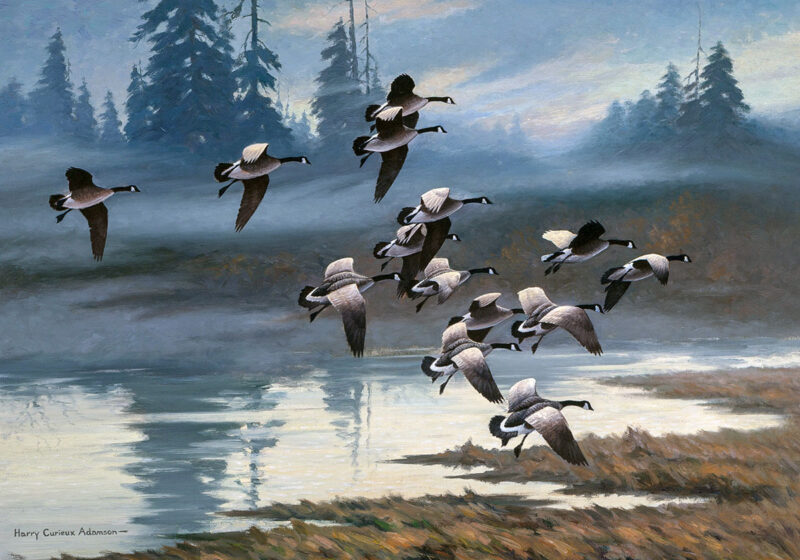
6:00 A.M.
I don’t try to shut the alarm off before Joanne wakes up. We’re already awake. That’s a new experience. I’m used to restless nights before a shoot, but I always try to slip out of bed without too much of a ruckus. This morning we’re both pulling on long underwear and wool socks at the same time. The other layers are waiting for us in the mud room downstairs.
In the kitchen we drink coffee and eat toast. The rest of the pot goes into my thermos.
Joanne’s eyes are shining as we layer up, grab gun, blind bag and thermos and leave the house. I turn to watch her make her way to the pickup, rain and sleet bouncing off our clothes: cute as a bunny. I grin at Joanne and gesture at the weather. “Perfect for geese.”
Joanne looks solemn, nods gamely, and says, “Uh huh.”
Twenty-five minutes later we’re on Winchell Mountain. I pull into the farmyard next to the milking barn. Joanne and I go to say good morning to Jack. He hasn’t met Joanne before. He looks through the door at the wind, sleet and rain. “Fine day to take your wife hunting.”
I nod, purposely ignoring the intended irony. “Yes, it is. Perfect. Just perfect.”
In wishing us good luck, Jack cautions me to stay on the tractor trails as there’s a lot of mud in the fields. Out we go into the storm.
Fifteen minutes in low/low, a distance normally covered in five minutes, and the pickup brings us to our hunting spot. To the east we can see a gray sky above the ridge line. Sunrise is still about ten minutes away. “We’ve got plenty of time,” I shout through the rain to Joanne. “The geese didn’t fly yesterday until 8:30. We can set up the decoys and still have time for coffee.”
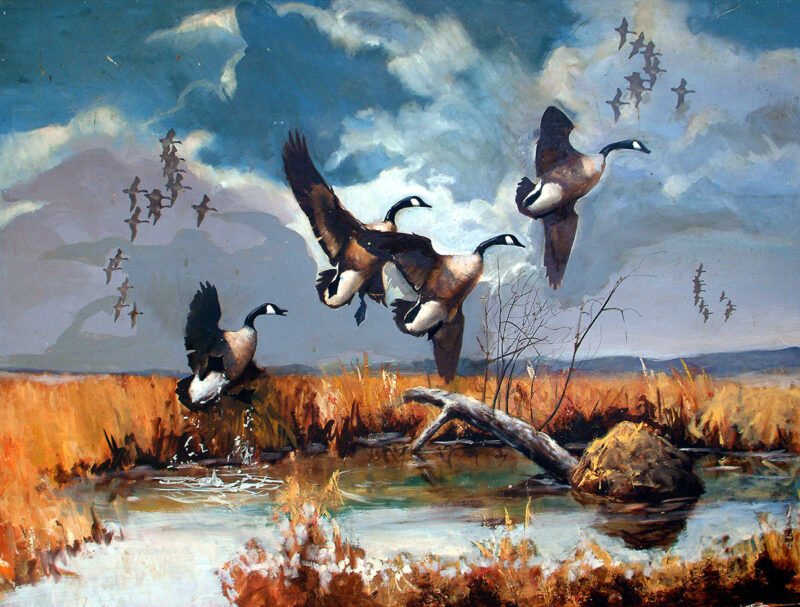 I lift a stack of decoys out of the bed of the pickup and hand it to her. “Take these out there about thirty steps.” Joanne makes me proud as she wades through the mud. What a perfect day! I unload the rest of the decoys, grab a stack and follow her out. “Put them six feet apart and face them into the wind.”
I lift a stack of decoys out of the bed of the pickup and hand it to her. “Take these out there about thirty steps.” Joanne makes me proud as she wades through the mud. What a perfect day! I unload the rest of the decoys, grab a stack and follow her out. “Put them six feet apart and face them into the wind.”
Joanne takes two steps then topples like a felled tree into four inches of wet, cold mud. I help her regain her footing. “What happened?”
“My boots. Got stuck. When I went to take another step, they stayed where they were.” Undaunted, she grabs the decoys. There is a dab of mud on one check and another on her nose. Cute as a bunny.
We slip, slide, and slosh our way through the field setting out decoys. We’ve only set out maybe half when I hear a honk. Then more. A flock of forty or so early risers. They are beating their way toward us through the wind and rain. They want to land. They make a good try, but give up and depart at speed, the wind at their backs.
Yep, we are in the right place. And then I think, “Those birds were in range. If I’d had my shotgun…”
More honking in the distance. I tell Joanne to squat down behind a stack of magnum decoys, the ones I always set out last. I run sloggingly to the pickup, leaving a muddy wake behind me. Crouching behind the truck, I load my over and under ten gauge. The birds desperately want to come in, and the wind and rain are so thick, I think they aren’t seeing too well. Their need of food, the blowing sleet, the partial decoy rig and marginally hidden hunters work together to bring them inside thirty yards.
I step out from behind the pickup, shoot once, then again. Two birds, dead in the air, land with a splash in the mud.
I wade back to Joanne with a tarp and camouflage. We sit on the tarp and cover ourselves with camo-mesh. Then we watch the show. Birds are coming to our field from all directions. They make a whirling melee in the air above us. A trio of geese land ten feet away. Then a flock of five spill in twenty yards behind us. I tell Joanne to pick a goose in the air to fill my limit. She points to the lead bird of a small group dropping in toward us. Up comes the ten gauge and down comes the bird.
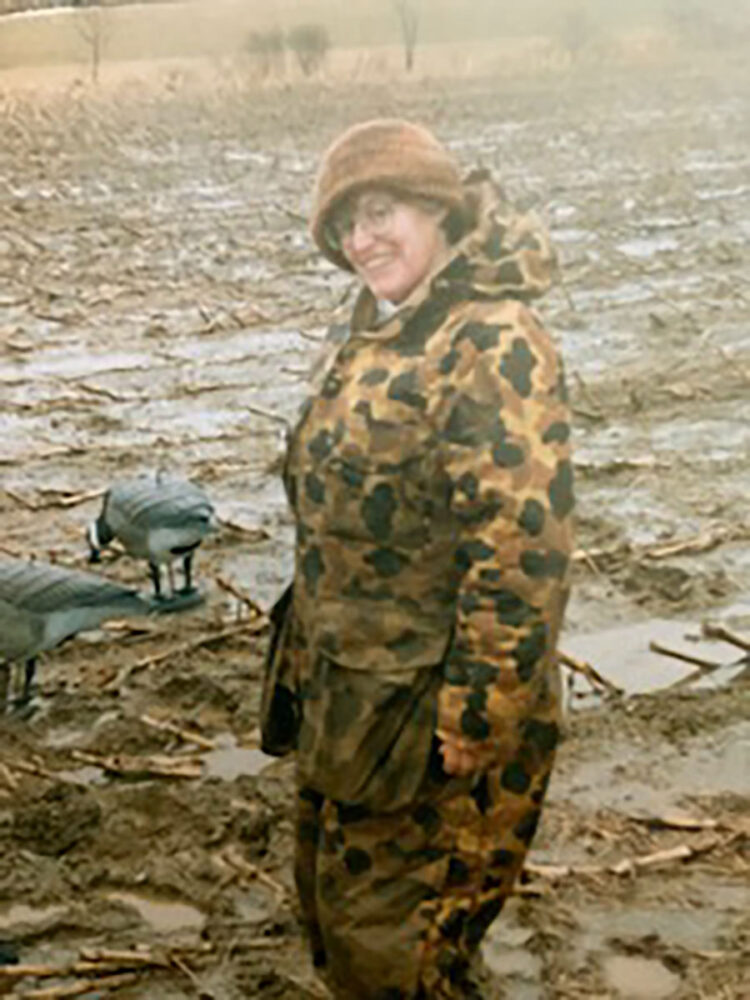 Our hunt is over, but the show goes on as we pick up birds, decoys, tarp and mesh. For a while we sit in the truck watching the geese fill the field, paying us not the slightest attention. When I start the truck and begin to maneuver us away, the geese show only mild annoyance.
Our hunt is over, but the show goes on as we pick up birds, decoys, tarp and mesh. For a while we sit in the truck watching the geese fill the field, paying us not the slightest attention. When I start the truck and begin to maneuver us away, the geese show only mild annoyance.
Back outside the milking barn, we finally get to our coffee. “So, what do you think? A perfect morning, right?”
Joanne nods. “Uh huh,” she says. “Just perfect.”
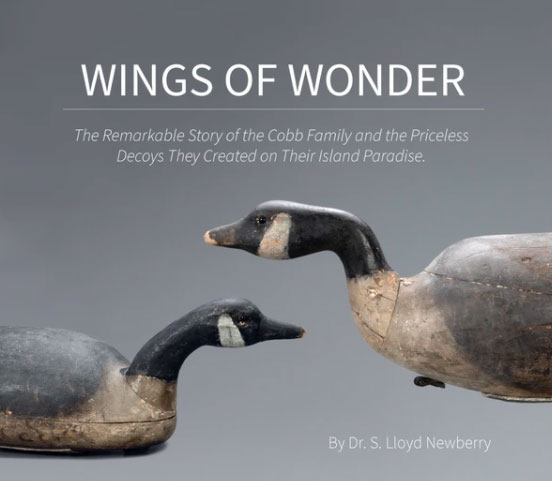 Featuring more than 200 decoys and hundreds of historical photos, maps and documents Lloyd Newberry traces the fascinating story of the Cobb Family through three generations. It’s a chronicle that historians and folk-art collectors will find both educational and enjoyable. Nathan Cobb and his family were iconic figures in the maritime and waterfowl gunning history of North America. With an ancestry and gene flow directly back to Plymouth Rock, Nathan’s father was a Cape Cod whaler and shipbuilder. Seeking a warmer climate for the women in his family who were suffering from tuberculosis, Nathan sailed south to homestead on Virginia’s Eastern Shore. With undaunted courage and fiber of steel, he built a home and community on an island that was little more than a sandbar. His life-saving and ship’s salvage business led to many harrowing experiences in stormy seas and freezing temperatures. Buy Now
Featuring more than 200 decoys and hundreds of historical photos, maps and documents Lloyd Newberry traces the fascinating story of the Cobb Family through three generations. It’s a chronicle that historians and folk-art collectors will find both educational and enjoyable. Nathan Cobb and his family were iconic figures in the maritime and waterfowl gunning history of North America. With an ancestry and gene flow directly back to Plymouth Rock, Nathan’s father was a Cape Cod whaler and shipbuilder. Seeking a warmer climate for the women in his family who were suffering from tuberculosis, Nathan sailed south to homestead on Virginia’s Eastern Shore. With undaunted courage and fiber of steel, he built a home and community on an island that was little more than a sandbar. His life-saving and ship’s salvage business led to many harrowing experiences in stormy seas and freezing temperatures. Buy Now
